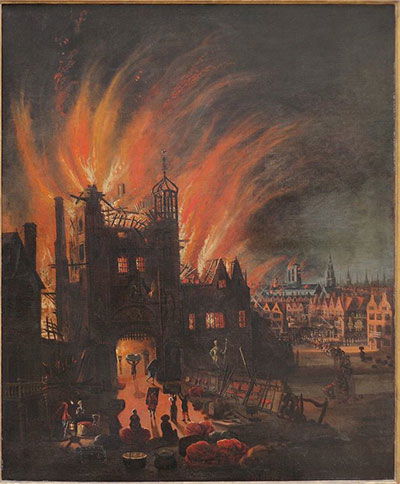The London That Was Burned
In 1666, writes Martin Holmes, much of the ancient City of London went up in what Samuel Pepys described as a ‘most horrid malicious bloody flame’.

The London of Charles II was architecturally rather a jumble. Much of this, curiously enough, was due to its own prosperity, and to the early and rapid development of its commercial importance. Its lanes and streets had been laid out in the days when transport was a matter of horses or mules going in single file: wheeled traffic—such as there was—being relegated to country thoroughfares alone.





